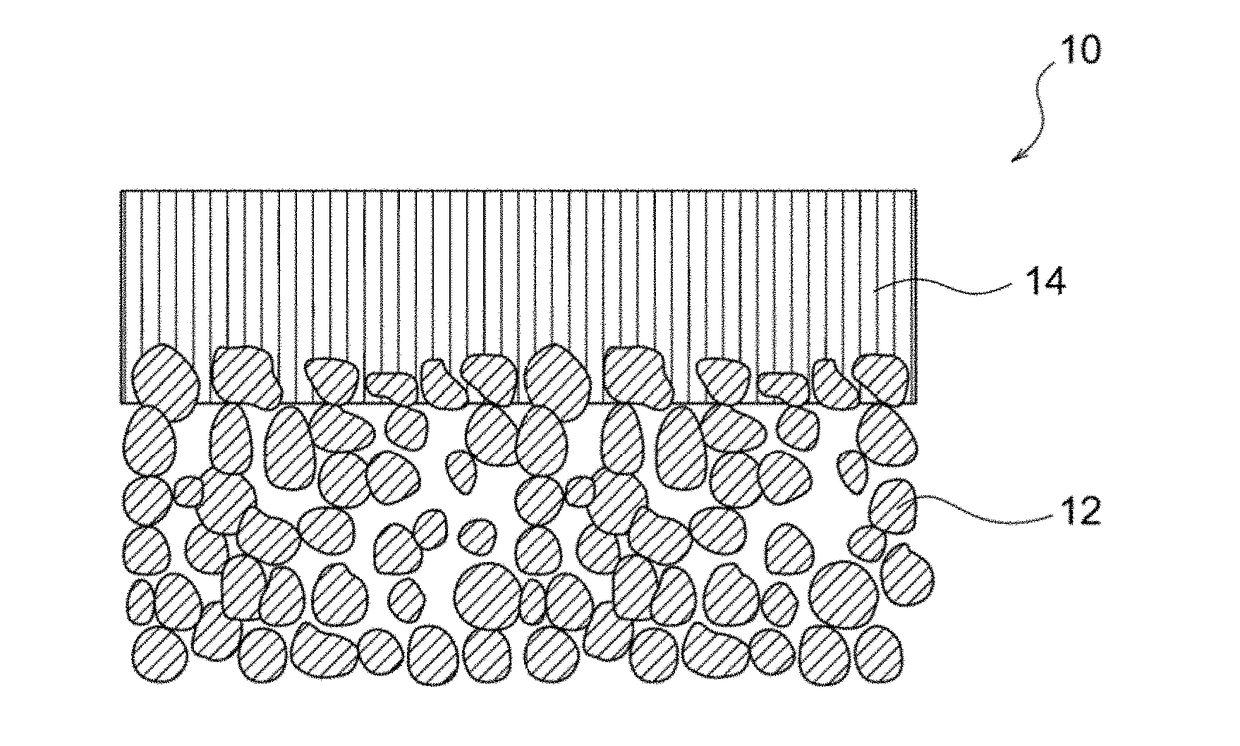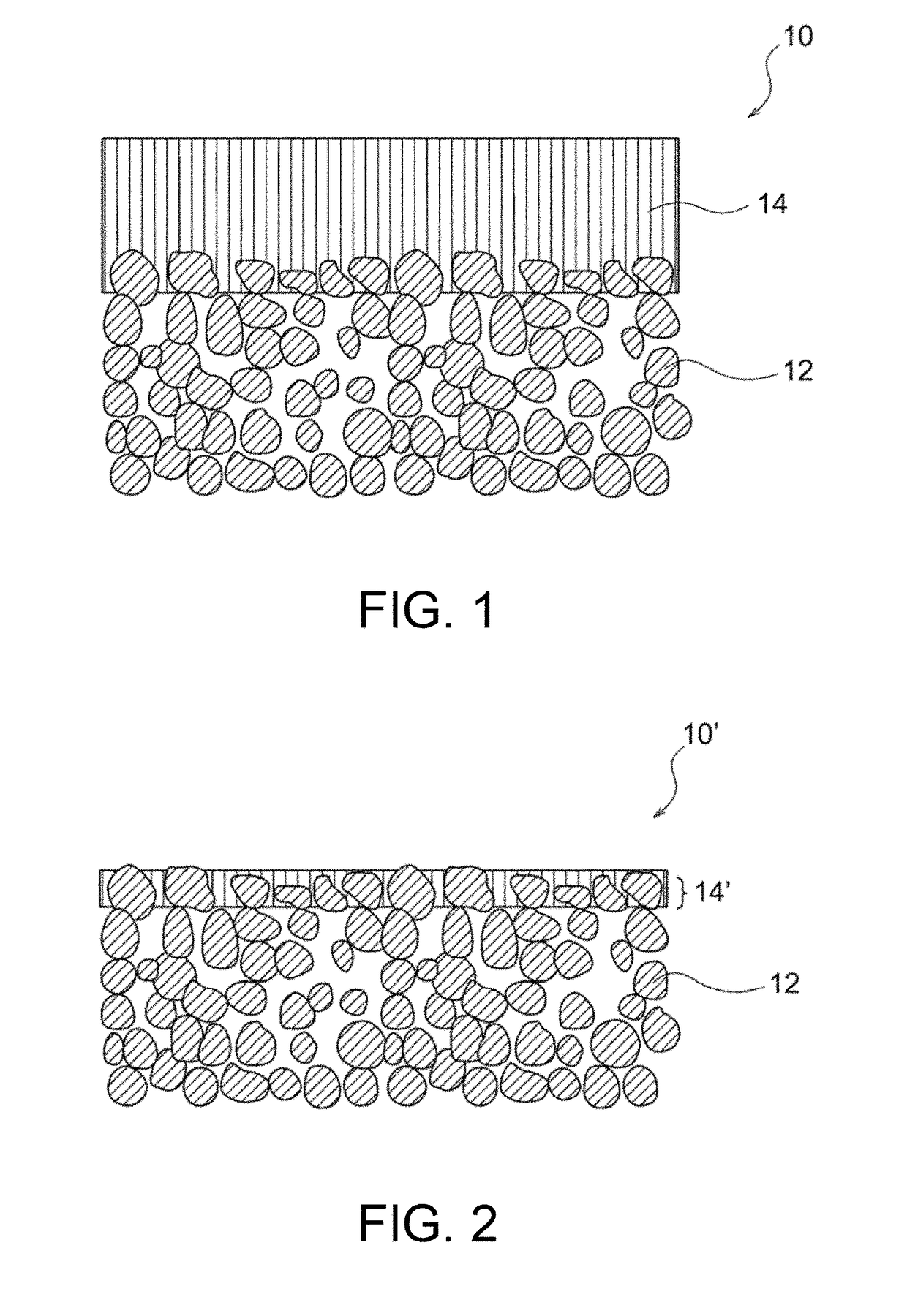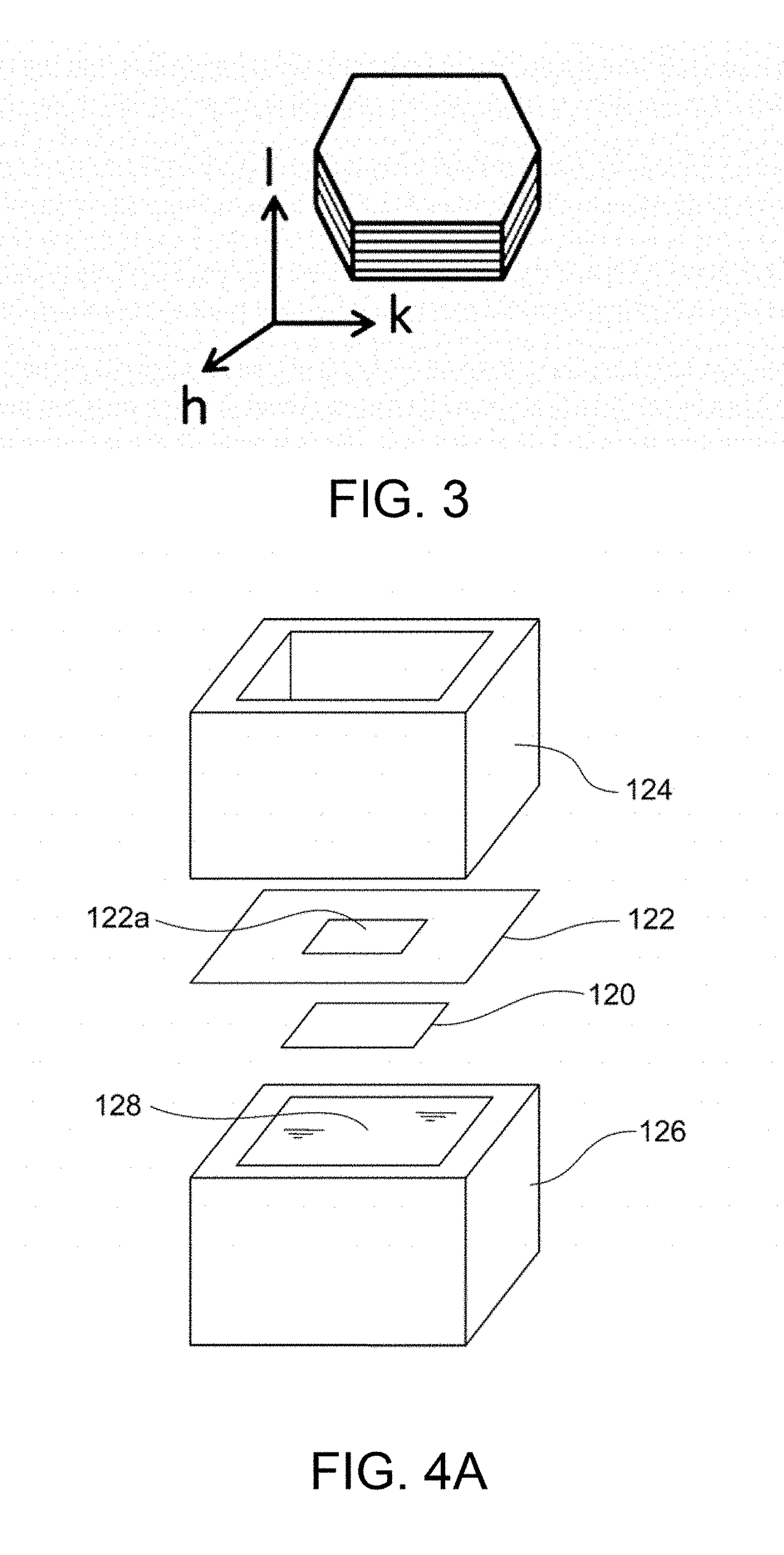Method for forming layered double hydroxide dense membrane
a technology of double hydroxide and dense membrane, which is applied in the direction of inorganic chemistry, fuel and secondary cells, non-aqueous electrolytes, etc., can solve the problems of high resistivity of ldh, insufficient density of ldh, and difficulty in evenly forming ldh
- Summary
- Abstract
- Description
- Claims
- Application Information
AI Technical Summary
Benefits of technology
Problems solved by technology
Method used
Image
Examples
examples
[0092]The present invention will be described in more detail by way of Examples below.
examples a1
to A6
[0093]Oriented layered double hydroxide membranes were formed on porous substrates in Examples described below. The membrane samples prepared in the Examples were evaluated as follows.
[0094]Evaluation 1: Identification of Membrane Sample
[0095]A crystalline phase of a membrane sample is analyzed with an X-ray diffractometer (RINT-TTR III, manufactured by Rigaku Corporation) at a voltage of 50 kV, a current of 300 mA, and a measuring range of 10° to 70°. The resultant XRD profile is compared with the diffraction peaks of layered double hydroxide (or a hydrotalcite compound) described in JCPDS card No. 35-0964 for identification of the membrane sample.
[0096]Evaluation 2: Observation of Microstructure
[0097]The surface microstructure of the membrane sample was observed with a scanning electron microscope (SEM; JSM-6610LV, manufactured by JEOL Ltd.) at an acceleration voltage of 10 to 20 kV.
[0098]Evaluation 3: Density Evaluation Test I
[0099]A density evaluation test was performed on ...
example a2-1
Polystyrene Spin Coating and Sulfonation
[0118]An 8YSZ porous substrate was prepared and cleaned as in Example A1 (1). The surface of the porous substrate had a porosity of 50%, and the porous substrate had an average pore size of 0.2 μm. Separately, a polystyrene substrate was dissolved in xylene to prepare a coating solution. The coating solution was applied (added dropwise) to the porous substrate by a spin coating process at 8,000 rpm for 200 seconds (including dropwise addition and drying). The spin-coated porous substrate was sulfonated through immersion in 95% sulfuric acid at 25° C. for four days, The sulfonated porous substrate was placed in an autoclave and an LDH membrane was formed as in Example A1 (2) and (3).
[0119]The resultant LDH membrane sample was evaluated. The results of evaluations 1 to 4 are described below.
[0120]Evaluation 1: The membrane sample was identified as an LDH (hydrotalcite compound) on the basis of the XRD profile.
[0121]Evaluation 2: SEM ages of surf...
PUM
| Property | Measurement | Unit |
|---|---|---|
| Temperature | aaaaa | aaaaa |
| Porosity | aaaaa | aaaaa |
| Pore size | aaaaa | aaaaa |
Abstract
Description
Claims
Application Information
 Login to View More
Login to View More - R&D
- Intellectual Property
- Life Sciences
- Materials
- Tech Scout
- Unparalleled Data Quality
- Higher Quality Content
- 60% Fewer Hallucinations
Browse by: Latest US Patents, China's latest patents, Technical Efficacy Thesaurus, Application Domain, Technology Topic, Popular Technical Reports.
© 2025 PatSnap. All rights reserved.Legal|Privacy policy|Modern Slavery Act Transparency Statement|Sitemap|About US| Contact US: help@patsnap.com



